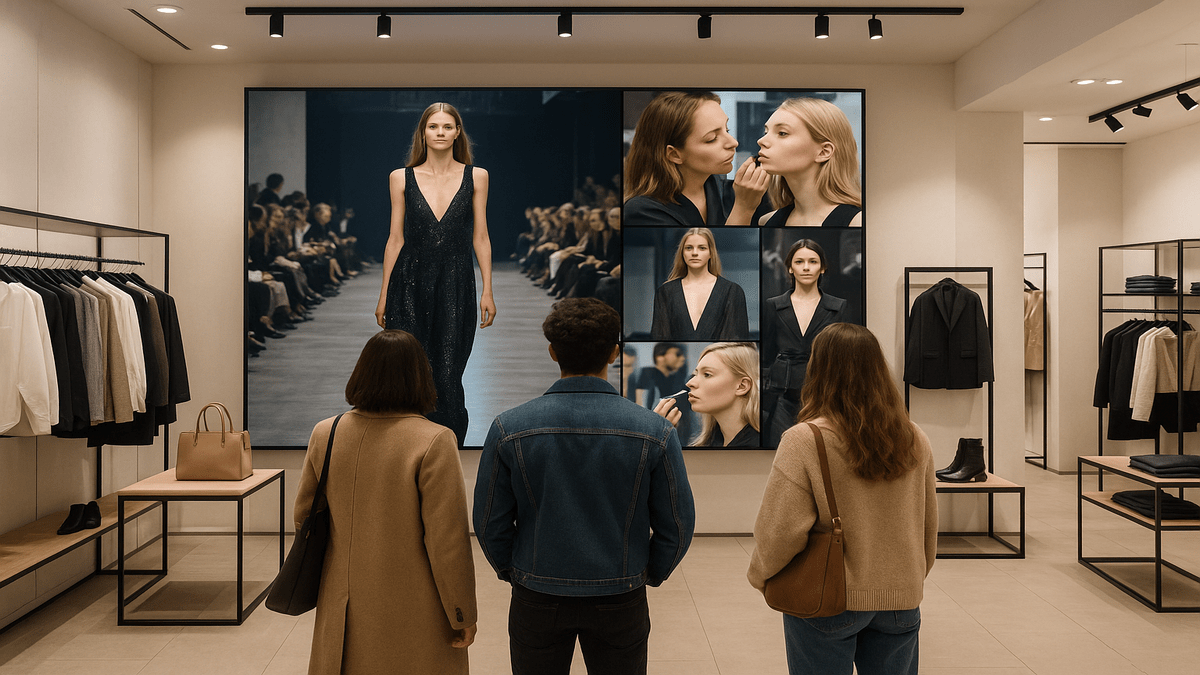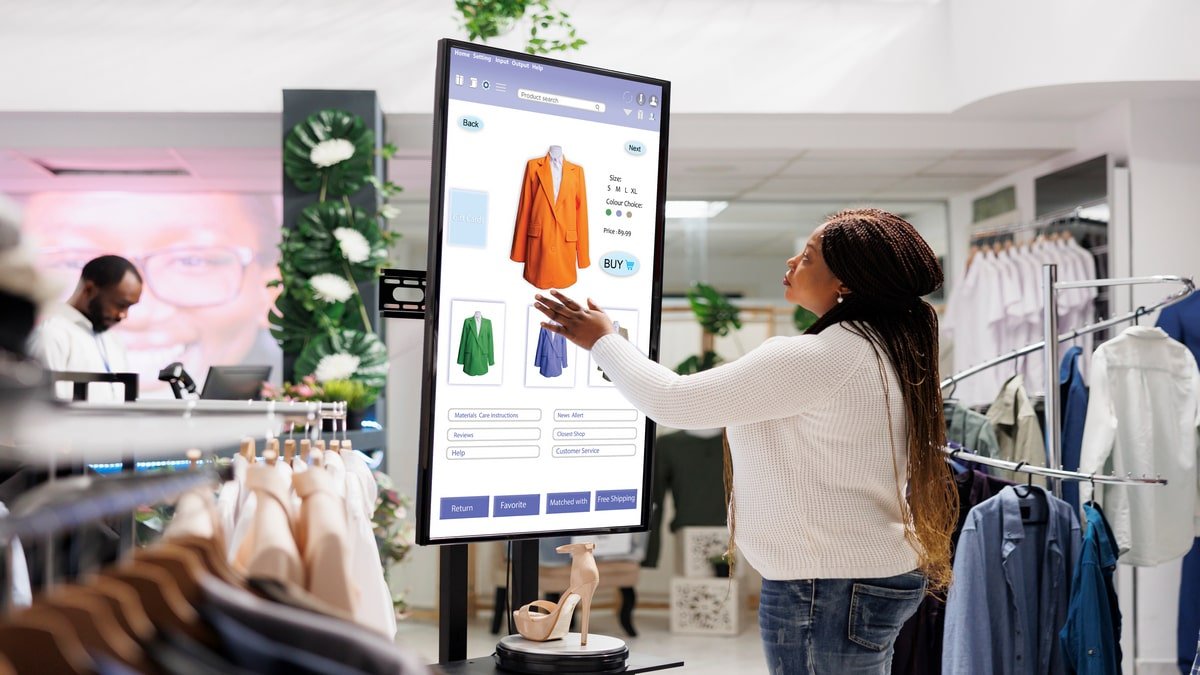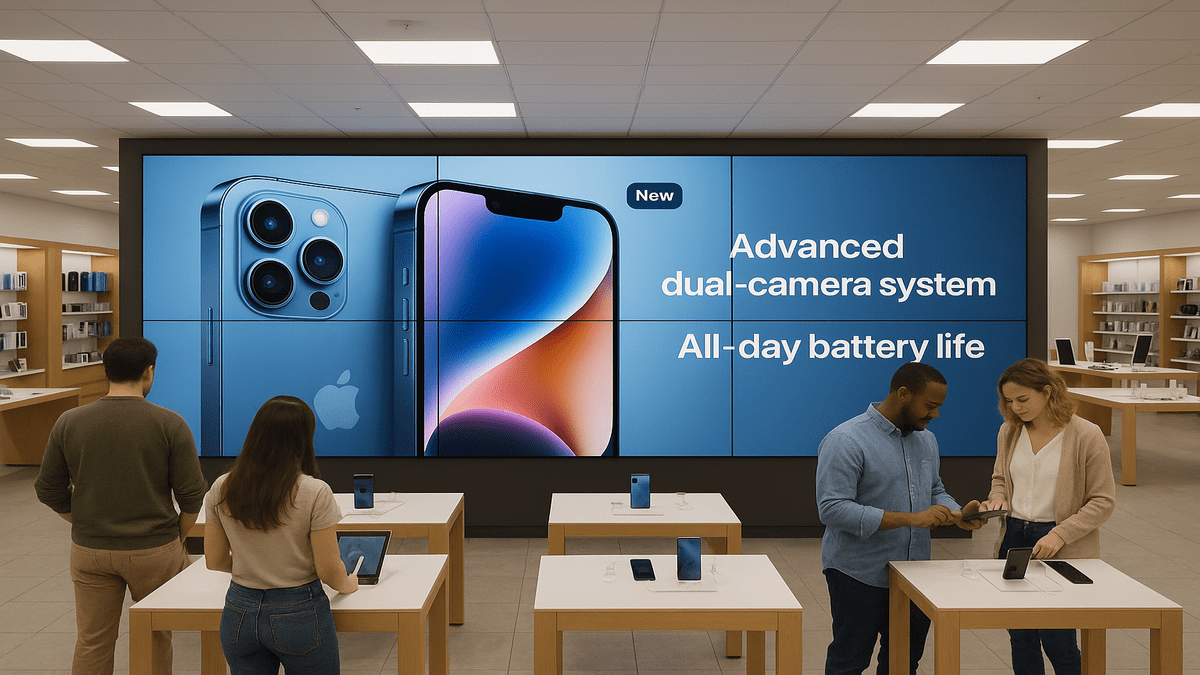In an era where customer attention is increasingly difficult to capture, retailers must innovate to stay ahead. One of the most powerful tools emerging in the modern retail landscape is the video wall, a dynamic, high-impact display solution that can transform the way brands connect with their customers. Knowing how to use video walls in retail effectively can create immersive experiences that not only boost engagement but also drive sales.
This article explores smart strategies to integrate video walls in your retail space, highlights best practices, and demonstrates how they complement broader retail digital signage solutions. Let’s delve into how these visual powerhouses can reshape your store experience.
What Is a Video Wall?
A video wall is a large-scale display composed of multiple screens tiled together to form one large surface or display. These can be used to show synchronized content across all screens or multiple forms of content simultaneously. They’re highly versatile and capable of producing vibrant, detailed visuals that capture customer attention like few other tools can.
These high-definition displays are fast becoming essential video walls for retail stores, with increasing adoption across department stores, electronics retailers, luxury boutiques, and even grocery chains.
1. Creating Immersive Brand Storytelling
 One of the most compelling reasons to use a video wall is its ability to tell stories visually. Shoppers today don’t just want products; they want to understand the lifestyle and values associated with a brand. With smart, synchronized visuals, retailers can craft immersive brand stories that evoke emotion, stir curiosity, and generate a deeper connection with the audience.
One of the most compelling reasons to use a video wall is its ability to tell stories visually. Shoppers today don’t just want products; they want to understand the lifestyle and values associated with a brand. With smart, synchronized visuals, retailers can craft immersive brand stories that evoke emotion, stir curiosity, and generate a deeper connection with the audience.
For example, a fashion retailer might use a video wall to play high-resolution runway footage or behind-the-scenes shots from fashion shoots. This helps to present the brand as aspirational and engaging.
Understanding how to use video walls in retail for brand storytelling means aligning your content with your identity—colors, tone, values, and audience expectations.
2. Dynamic Product Showcases
Gone are the days when a mannequin or display shelf was enough. Retailers can now feature their products in action—highlighting functionality, benefits, and lifestyle integration—all through vivid video content.
Whether you’re a tech store demonstrating the features of the latest smartphone or a home decor shop showcasing how products look in various settings, video walls for retail stores offer an unparalleled platform for engagement. A well-placed video wall can trigger impulse purchases, enhance product understanding, and reinforce customer confidence.
This strategy becomes even more effective when combined with retail digital signage solutions that can update content in real time based on promotions, events, or even the weather.
3. Strategic Placement for Maximum Impact
Knowing how to use video walls in retail involves more than just content—placement is equally crucial. Where you position your video walls can make or break their effectiveness.
- Entrance areas: Create an immediate wow factor and draw customers deeper into the store.
- Point-of-sale zones: Offer last-minute product reminders or exclusive offers.
- High-traffic aisles: Drive awareness about products customers may not have considered.
- Changing rooms: Display styling tips, product features, or promotional content for upselling opportunities.
Incorporating retail digital signage solutions in tandem with video walls allows retailers to sync content across various touchpoints, guiding customer journeys from entrance to exit.
4. Real-Time Content and Seasonal Campaigns
Retail is an ever-changing landscape, and video walls provide the flexibility to adapt content quickly and efficiently. One of the main advantages of video walls for retail stores is the ability to update displays in real time. Retailers can swap seasonal campaigns, flash sales, or new arrivals without changing physical signage.
This agility is especially beneficial during peak shopping periods like Black Friday, Christmas, or new product launches. Leveraging retail digital signage solutions ensures seamless content scheduling and deployment, saving time and operational costs.
5. Interactive and Personalized Experiences
 Today’s shoppers are tech-savvy and expect interactivity. Touch-enabled video walls can provide personalized experiences, allowing customers to browse product catalogs, check availability, or view style suggestions tailored to their preferences.
Today’s shoppers are tech-savvy and expect interactivity. Touch-enabled video walls can provide personalized experiences, allowing customers to browse product catalogs, check availability, or view style suggestions tailored to their preferences.
Advanced integrations, such as AI-powered recommendation engines or face recognition tools, can enhance personalization, creating a futuristic in-store journey. Knowing how to use video walls in retail to deliver such interactivity differentiates your store in a competitive environment.
Surprisingly, this strategy can also resonate with non-retail businesses aiming to improve customer experience. For instance, hospitals investing in digital infrastructure may benefit from learning about choosing the best size and type of Digital signage display, ensuring optimal information dissemination across departments.
6. Measuring Success and ROI
Just like online marketing campaigns, video walls can be optimized for measurable results. With the right tracking tools and analytics, retailers can assess foot traffic, dwell time, and conversion rates associated with video wall content.
Metrics such as “content effectiveness” or “customer engagement time” can inform future campaigns and design. By understanding how to use video walls in retail as part of a data-driven ecosystem, businesses can enhance both their marketing and operations strategies.
Retailers considering an upgrade to their technology stack may also want to explore What are digital signage displays, especially when deciding between single-screen units and multi-panel video walls.
7. Enhancing Store Aesthetics and Ambience
Beyond promotional use, video walls can also elevate the store atmosphere. Whether it’s serene ocean visuals in a spa or ambient lighting sequences in a modern apparel store, video walls contribute to the store’s overall aesthetic. This affects how customers feel in the space, influencing their willingness to stay longer—and spend more.
Understanding how to use video walls in retail for ambiance rather than direct sales can yield long-term brand loyalty and higher lifetime customer value.
8. Integration with Omnichannel Strategies
Smart retailers don’t treat video walls in isolation. Instead, they’re integrated into broader omnichannel strategies that tie together in-store, mobile, and online experiences. Imagine a customer browsing an online catalog, then visiting the physical store to see an extended demo of that product on a large-scale video wall.
This approach creates consistency across touchpoints. When synchronized with apps, loyalty programs, or QR code campaigns, it forms a complete loop—from digital discovery to physical purchase.
9. Staff Empowerment and Training
Video walls are not just for customers. Some retailers use them for internal communication—training, staff updates, or showcasing best practices. When not customer-facing, these walls can deliver high-quality instructional content to improve staff efficiency and product knowledge.
Moreover, engaging staff with visually rich content can boost morale and strengthen brand culture, ensuring better in-store service and customer satisfaction.
10. Future Trends in Video Walls for Retail
As technology evolves, so do the applications of video walls. Trends shaping the future include:
- Augmented Reality (AR) integration: Try-on mirrors and AR overlays.
- Smart sensors: Adjusting content based on viewer demographics or movement.
- Sustainable displays: Low-energy panels for eco-conscious brands.
- Cloud-based management: Seamless content control across store chains.
Understanding how to use video walls in retail as a flexible, future-ready investment ensures you stay ahead of competitors and aligned with customer expectations.
Conclusion:
Retailers must constantly innovate to captivate and convert customers. Video walls are no longer a luxury—they are becoming a strategic necessity. When paired with retail digital signage solutions and tailored to customer behaviors, these displays can elevate brand perception, deepen engagement, and dramatically increase sales.
Now that you understand how to use video walls in retail, the next step is strategic implementation. Start small, test what resonates, and scale with confidence.




